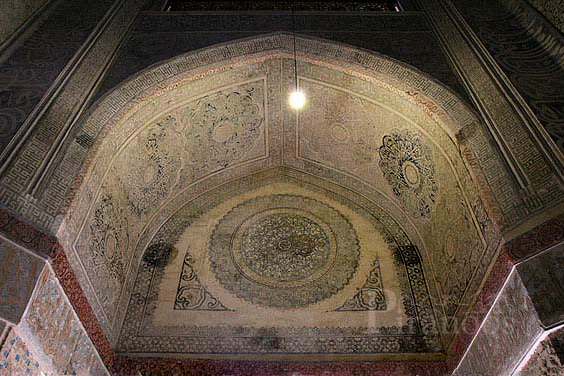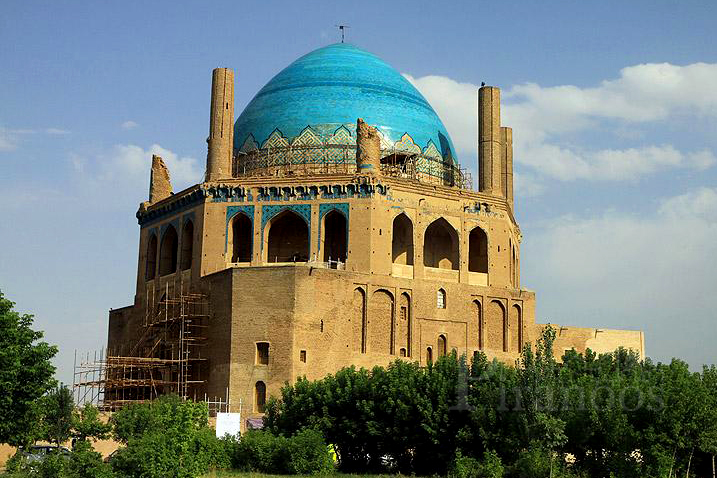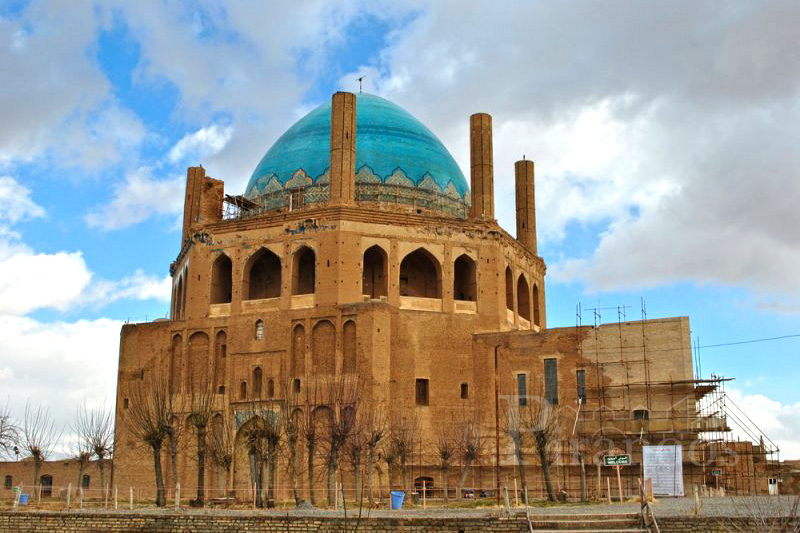Soltaniyeh city is located in Zanjan province. A city full of fascinating historical attractions. Soltaniyeh city is one of the cities of Zanjan province which is located 43 kilometers from Zanjan city. Dome of Soltaniyeh and Oljaytu’s tomb are in this city. Other monuments in the city include the tomb of Mullah Hassan Kashi and the Khaneghah of Hussam al-Din Hasan Chalabi (also known as Chalabi ogli). According to available historical sources, the city of Soltaniyeh was first built during the Mongol Ilkhanid period.

The Soltaniyeh dome was built between the ages of 704 and 712 AH; by the orders of the Mongol king Oljaytu, known as Sultan Muhammad Khodabandeh, with the authority and supervision of Khaje Rashid al-Din Fazlullah Hamadani. The Soltaniyeh dome, which attracts everyone with its grandeur and magnificence, is one of the masterpieces of Iranian architecture in the Ilkhanid era.

According to architectural studies the Soltaniyeh Dome in Zanjan is the third most famous tall dome in the world, after the Italian Church of Santa Maria and the Turkish Ayasufiye Mosque and it is also referred to as the largest brick dome in Iran and in the world. This unique beautiful Iranian dome is also listed in the UNESCO World Heritage List. It is interesting to know that the Soltaniyeh Dome was the inspiration for the architects in the construction of the Church of Santa Maria Delfiori (Florence Cathedral) and the Taj Mahal of India. Another unique feature of this amazing dome that makes it so important is its 1600-ton weight, which has lasted for 700 years.
The Soltaniyeh dome, built by the order of Oljaytu (the Mongol ruler), shines like a turquoise in the heart of the desert with its blue facade.

In terms of architecture, the Soltaniyeh dome in Zanjan consists of three floors, the style of which was also inspired by the Seljuk architecture and on the ground floor and first floor and also the spaces around the dome are in a rectangular shape and on the second and third floors it becomes an octagon. The length of each side of this octagon is 17 meters. Material used in the construction of the main body of the dome is brick, and in the dome section is adorned with beautiful turquoise and azure tiles. The mortar used in the building is a mixture of plaster and a small amount of lime.
The main parts of the Soltaniyeh Dome include Torbat Khaneh, the Crypt and the Gonbad Khaneh. In the southern part of the Soltaniyeh dome there is a section called Torbat Khaneh, which is about 17 meters long, 8 meters wide and 16 meters high. Sūrat al-Mulk is carved and written on the walls of the altar in front of the door in Kufi and Thulus calligraphy by using the Torbat Imam Hussein (AS) and therefore known as Torbat Khaneh. The crypt was actually the burial place of kings and officials at that time. The Gonbad Khaneh, another section of the Soltaniyeh dome, is about 50 meters long and its central span is 25.5 meters. Soltaniyeh is one of the earliest examples of a double-shell dome in the world about 160 cm thick and the gap between two shells is 60 cm. The double-shelled dome shows the architect’s intelligence about static issues that have created a hollow space that has made the building resistant to earthquakes.
The dome also has skylights that had been used as a sun clock. When the light was shining through the main hole of the dome, it was the Azan time, the light shining through the large windows indicated the hour, and the light shining through the small windows represented the minutes. It’s one of the most remarkable and very clever and distinctive features of its architecture.